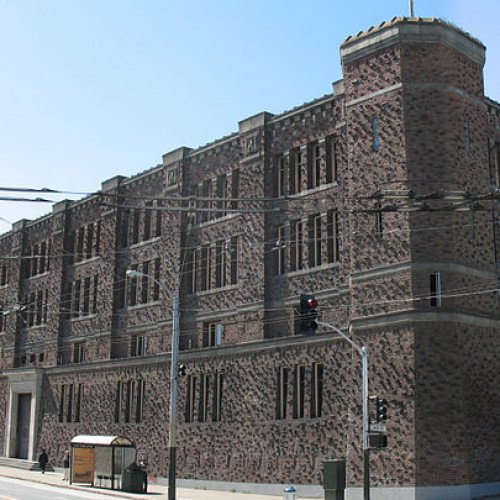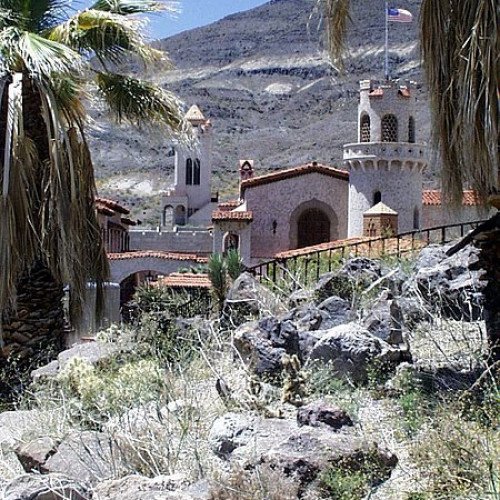Castles of "United States" SAN FRANCISCO ARMORY vs SCOTTY'S CASTLE

SAN FRANCISCO ARMORY
The San Francisco Armory, also known as the San Francisco National Guard Armory and Arsenal or simply The Armory, is a historic building in the Mission District of San Francisco, California. As of 2018, it is owned by SF Armory LLC, an affiliate of AJ Capital Partners. The building was constructed as an armory and arsenal for the United States National Guard in 1912–1914 and designed with a castle-like appearance in a Moorish Revival style. The Armory was built on part of the site of Woodward's Gardens (1866–1891), a zoo, aquarium, art museum, and amusement park which covered two city blocks, bounded by Mission, Valencia, 13th, and 15th Streets. The structure was built as a replacement for the old San Francisco Armory in the Western Addition, which had been destroyed by the 1906 earthquake. In addition to its role as an armory and arsenal, during the 1920s, it served as a venue for sporting events, such as prizefights. The Armory served as a stronghold and rallying point for the National Guard in their suppression of the 1934 San Francisco General Strike (an event known as "Bloody Thursday"). The building closed as an armory in 1976, when the National Guard moved its facilities to Fort Funston.
Statistics for this Xoptio

SCOTTY'S CASTLE
Scotty's Castle (also known as Death Valley Ranch) is a two-story Mission Revival and Spanish Colonial Revival style villa located in the Grapevine Mountains of northern Death Valley in Death Valley National Park, California, US. Scotty's Castle is named for gold prospector Walter E. Scott, although Scott never owned it, nor is it an actual castle. The ranch is located about 45 miles north of Stovepipe Wells, California, via California State Route 190 to Scotty's Castle Road, or about a three-hour drive from Las Vegas, Nevada. The property was severely damaged by flooding in October 2015 and is not currently open to the public. Construction began on Scotty's Castle in 1922, and cost between $1.5 and $2.5 million. Prospector, performer, and con man Walter Scott, born in Cynthiana, Kentucky, also known as "Death Valley Scotty," convinced Chicago millionaire Albert Mussey Johnson to invest in Scott's gold mine in the Death Valley area. Though initially angered when the mine turned out to be fraudulent, Johnson was fascinated with the colorful Scott and the two men struck up an unlikely friendship. By 1937, Johnson had acquired more than 1,500 acres (610 ha) in Grapevine Canyon, where the ranch is located. After Johnson and his wife Bessie made several trips to the region, and his health improved, construction began. It was Mrs. Johnson's idea to build something comfortable for their vacations in the area, and the villa eventually became a winter home. The Johnsons hired Martin de Dubovay as the architect, Mat Roy Thompson as the engineer and head of construction, and Charles Alexander MacNeilledge as the designer.